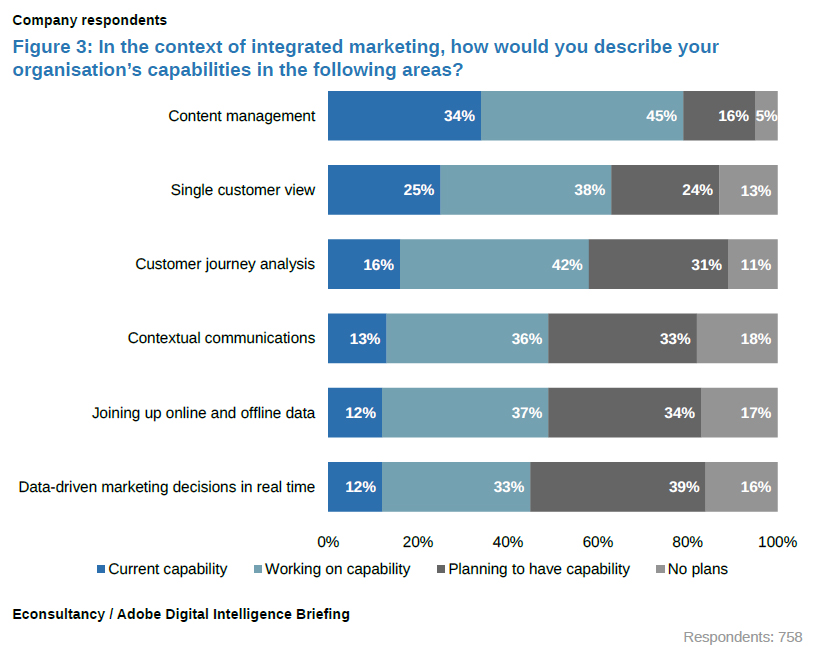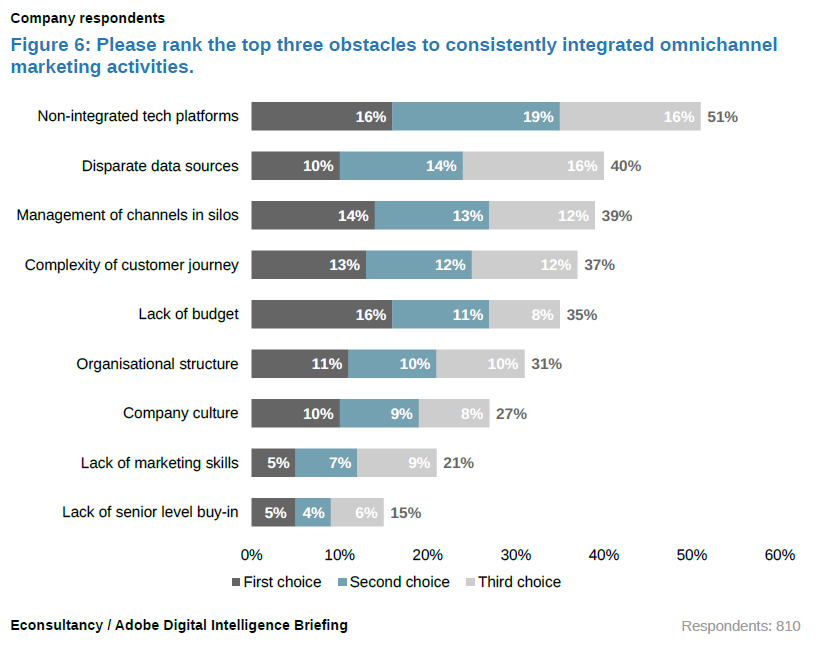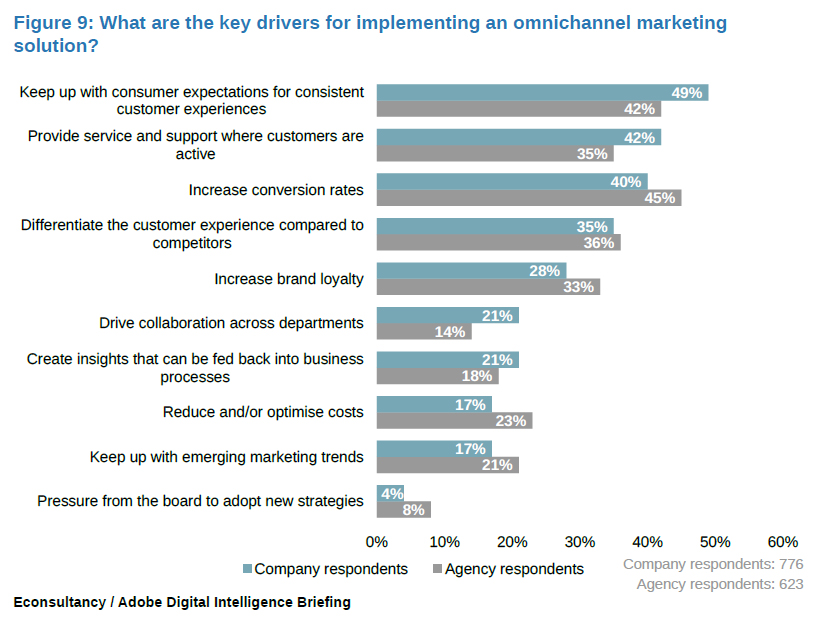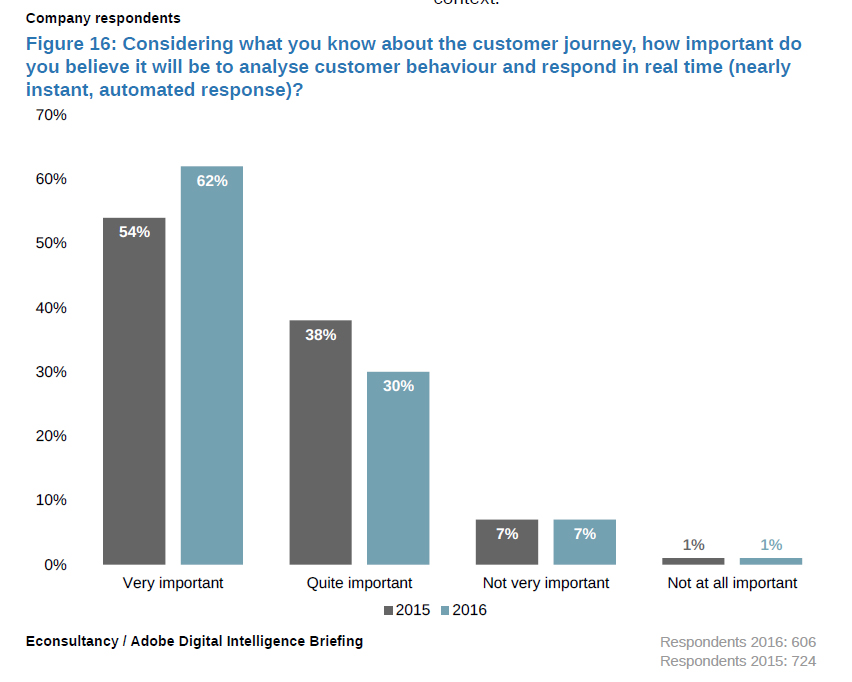bandt.com.au

A new report titled Adobe and eConsultancy Digital Intelligence Briefing: Succeeding in the Omnichannel Age, has been unveiled to explore the extent to which organizations are stepping up to the challenge of delivering consistent and relevant customer experiences across all touchpoints.
According to Adobe’s VP of marketing in Asia Pacific, Marta DeBellis, “Mobile commerce is predicted to account for 45 per cent of overall ecommerce sales by 2023.
“With mobile playing such a central role in bringing both online & offline channels together, marketers are not yet taking full advantage of the opportunity it presents in driving in-store efficiency, engagement and sales.
“Nearly three in five (57 per cent) of those surveyed agree that they lack the necessary analysis skills to effectively map the mobile customer journey.”
More than 2,000 digital marketers and ecommerce professionals in Asia Pacific, Europe and the US were surveyed for this report, and some of the key findings were:
- While companies are 29 per cent more likely to take an integrated approach to all their campaigns across all channels compared to last year, the proportion of those saying that none of their marketing campaigns are integrated has more than doubled over the last three years.
- Data-related issues hinder progress as more than half of organisations have separate technologies for managing data across channels. These separate technologies are the most significant barrier to integration (51 per cent), followed by the inherently linked problem of disparate data sources (40 per cent).
- Over two-fifths (42 per cent) of companies report that they are currently at the stage of evaluating their options when it comes to cross-channel campaign management tools with 16 per cent of APAC companies leaning towards an in-house solution.
- Nearly three in five (57 per cent) of those surveyed agree that they lack the necessary analysis skills to effectively map the mobile customer journey.
- It appears that omnichannel marketing is well-supported at a senior level, with only 15 per cent saying that buy-in is a top-three barrier.
The report stated that certain capabilities (featured in Figure 3) are inherently linked and form the foundations of effective omnichannel marketing. It added, “With the exception of content management, only up to a quarter of those surveyed claim they have these capabilities, but progress is underway for at least three in five.”
The rise of disruptive technologies, such as wearables and the Internet of Things (IoT), opens up new possibilities for brands and brings contextual communications to the fore.
The report urged marketers, “Rather than thinking of a customer’s relationship with the product as just the moment of sale, brands can understand how that relationship evolves and how the product is used in various contexts, either physical or virtual.
“Throughout that lifecycle, new experiences can be created and managed in a contextual manner. Additionally, more contextual opportunities to cross-sell and up-sell can be identified.”
An example provided was that of Diageo’s Johnnie Walker Blue Label ‘smart bottle’, launched in collaboration with Thinfilm, a company that produces printed sensor tags.
With these tags, Diageo is able to know at what stage the customer is with the product – for instance, it can detect if a bottle is sealed or open. This enables the company to send targeted and timely marketing messages to customers, such as promotional offers, cocktail recipes and exclusive content.
The top three obstacles in Figure 6 all relate to separate management of channels. Although organisational structure (31 per cent) and company culture (27 per cent) are selected by a smaller proportion of companies, it is clear that a change in company structure and culture would lead to improvements in consistently integrated omnichannel marketing activities.
Asked how their companies currently determine the performance of their omnichannel marketing activities, respondents answered with a few different explanations:
- “Extremely difficult due to the size of the organisation, there is no central point for marketing decisions to be made.”
- “We have to manually ask the sales team for performance figures. And most times they provide information that is not necessarily linked to the campaign that we had been running.”
- “Disjointed data and poor measurement capability from the various platforms leads to poor analysis and lack of proof of ROI.”
- “We currently don’t operate on an omnichannel level. However, those involved in digital are eager to get decent tools and reporting in place so we can better attribute and understand our efforts.”
Agency respondents commented in this vein:
- “In an ad-hoc way when our clients can find the time to sit down and evaluate the stats. They do not have a dedicated person or team evaluating and they are not prepared to pay for us to do it in any more than a cursory fashion. People look after individual channels but rarely do they come together to discuss the impact a collective effort could have.”
Half (49 per cent) of company respondents say that one of the key drivers for implementing an omnichannel marketing solution is the desire to keep up with consumer expectations for consistent customer experiences (as seen in Figure 9 above).
The benefits of understanding the mobile customer journey and how mobile integrates with other channels in the customer’s path to purchase are immense. Marketers are very much aware of the importance of mobile and 51 per cent of marketers rank mobile as a top-three priority area for their organisation.
However, marketers are not taking full advantage of the opportunity that mobile presents in driving in-store efficiency, engagement and sales. Around seven in ten company respondents agree that they lack the systems (71 per cent), mobile data (70 per cent) and time/resource (66 per cent) to effectively map the mobile customer journey (Figure 14).
Few respondents are harnessing the marketing opportunities that mobile apps present, with only 5 per cent ‘strongly’ agreeing that they use in-app messaging. In-app marketing has the potential to encourage users to submit reviews and ratings, and can be combined with loyalty programmes to provide customers with a more positive and seamless experience.
Awareness of the importance of this ability is high, however (Figure 16). Almost two-thirds of respondents rate it as ‘very important’ and a further 30 per cent see it as ‘quite important’.
Almost a third (28 per cent) of respondents realise the importance of the systems at least being able to speak to one another, and have separate tools that are integrated with one another. However, the proportion of those
saying that’s the case has declined by 24 per cent since last year.
saying that’s the case has declined by 24 per cent since last year.
This leaves another third (29 per cent) who use the same platform for campaign management and email marketing, and are arguably a step closer to a more seamless integration of their data across all channels.
The knockon effect of having a more streamlined flow, with data being processed through a single system, includes saving staff time and effort – allowing marketers to spend more time interpreting campaign results and taking appropriate actions.





No comments:
Post a Comment